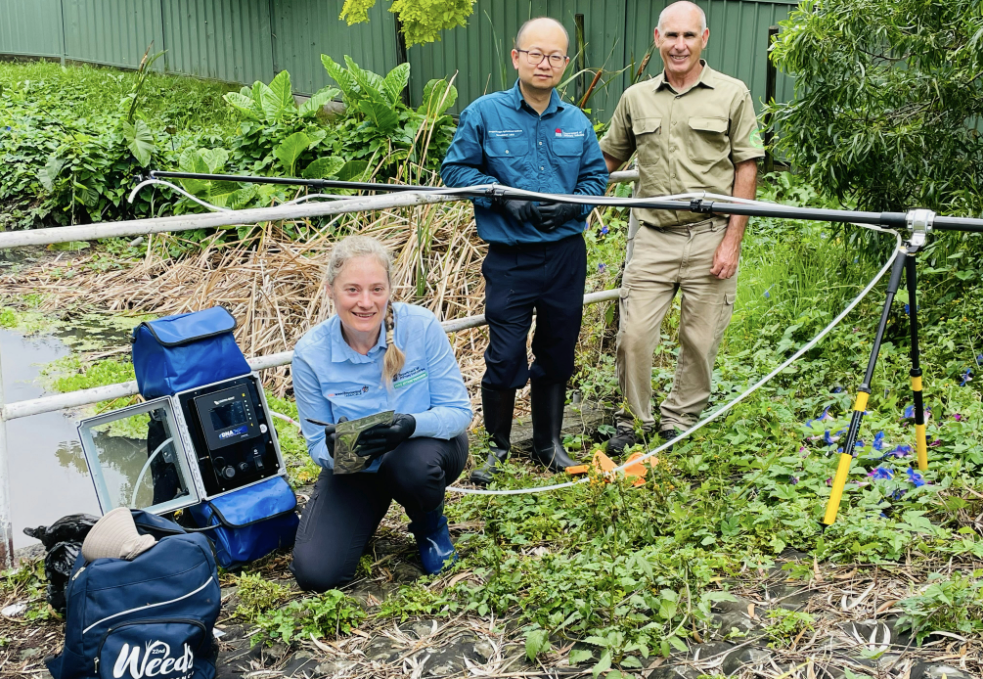World-first eDNA research workshop in Wollongbar
03 November 2025, 4:31 PM
 NSW Department of Primary Industries and Regional Development weed researchers, Dr Karen Bell and Dr Xiaocheng Zhu with Illawarra Shoalhaven Joint Organisation Chief Weeds Officer, David Pomery, collect Amazon frogbit eDNA samples near Wollongong. Photo: supplied.
NSW Department of Primary Industries and Regional Development weed researchers, Dr Karen Bell and Dr Xiaocheng Zhu with Illawarra Shoalhaven Joint Organisation Chief Weeds Officer, David Pomery, collect Amazon frogbit eDNA samples near Wollongong. Photo: supplied. Weed biosecurity officers from NSW, Queensland, Victoria and Western Australia will soon take advantage of the latest environmental DNA (eDNA) techniques to detect the aquatic weed, Amazon frogbit (Limnobium laevigatum).
The NSW Government Department of Primary Industries and Regional Development (DPIRD) is running free workshops in November in Wollongong, Cessnock, Wollongbar and Innisfail, and in Melbourne and Gingin in early December, to upskill weed managers in the new technology.
The Wollongbar eDNA workshop is on Tuesday, November 11.
NSW DPIRD scientist, Karen Bell, said the department’s weed research team used eDNA samples they took from NSW waterways to develop the world’s first laboratory assays for frogbit DNA.
“We now aim to give local weed managers access to the technology with practical training on how to take eDNA samples in the field,” Dr Bell said.
“eDNA sampling can detect unseen or hidden frogbit plants in waterways, allowing weed management teams to target unwanted weeds and eradicate new incursions before they infest our environment and farmland – saving time and money.
“The technology can be used to accurately map infestation areas by taking eDNA samples at sites surrounding known infestations.
“Weed managers will learn how we conduct eDNA assays in the laboratory using the samples they have taken.”
The half-day workshops are co-funded by NSW DPIRD and the Australian Government with support from local weed management authorities.
Amazon frogbit is a floating freshwater plant from Central and South America. It can rapidly invade and smother waterways and is a serious biosecurity threat.
In NSW, anyone who becomes aware of or suspects the presence of frogbit must immediately notify DPIRDunder the Biosecurity Act 2015. This plant must not be sold in NSW.
More information about how to identify and manage invasive weeds is available from NSW WeedWise, https://weeds.dpi.nsw.gov.au/.

